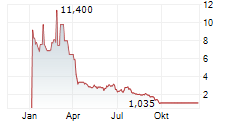Published in Nature Communications, a new study uncovers critical protein biomarkers that predict functional decline in Duchenne Muscular Dystrophy (DMD), opening doors to more personalized care and improved clinical trials.
LEIDEN, THE NETHERLANDS, GAINESVILLE, FL, AND NEW YORK, NY / ACCESS Newswire / October 16, 2025 / In a major advancement for Duchenne muscular dystrophy (DMD) research and patient care, a multi-institutional team led by investigators from Leiden University Medical Center, the University of Florida and BioSymetrics Inc (a subsidiary of Lunai Bioworks Inc.; NASDAQ:LNAI) has identified serum proteins that can serve as prognostic biomarkers in DMD. The study, published today in Nature Communications and supported by Parent Project Muscular Dystrophy (PPMD), analyzed over 700 longitudinal serum samples using the SomaScan® proteomics platform.
The research represents one of the most comprehensive proteomic efforts in DMD to date, integrating rich longitudinal data from two independent cohorts - one in Europe and one in the United States. Leveraging statistical modeling and cross-cohort validation, the team identified a set of proteins, including RGMA, ART3, and ANTXR2, that are not only associated with motor performance but also reliably predict disease progression, such as loss of ambulation and upper limb function.
"Monitoring progression of DMD patients in natural history studies and clinical trials has been historically done using clinical scales and timed tests that have been shown to be dependent on patients' motivation. This study shows that proteins in serum offer a valid alternative to monitor disease progression," said Dr. Pietro Spitali, an Associate Professor of human genetics at Leiden University Medical Center. "It has been a great pleasure to work on the project with this multidisciplinary team and I am looking forward to seeing how our data will be used by other groups to monitor their patients and to improve clinical trials design."
These findings are expected to contribute to earlier and more individualized interventions in clinical settings, and to refine enrollment and stratification strategies in clinical trials by identifying patients more likely to experience disease progression.
"Identifying robust, minimally invasive prognostic biomarkers in Duchenne muscular dystrophy has been a long-standing challenge for the field," said Dr. Glenn Walter, a professor of physiology and aging at the University of Florida. "This study represents a significant step forward, as these serum-based protein biomarkers not only enable the prediction of disease progression with a simple blood test but can also be integrated with other patient-specific data, including genetic and clinical information. The ability to combine these approaches will help facilitate more personalized management strategies, optimize clinical trial design, and ultimately improve outcomes for individuals living with DMD."
"We are greatly encouraged by these initial findings from this collaborative proteomics study," said Dr. Eric Camino, the vice president of research and clinical innovation at PPMD. "There is a critical need to identify biomarkers that can inform us about individual patient trajectories within such a heterogenous disease to enhance patient care and potentially impact therapy development."
BioSymetrics, a data science and AI company specializing in biomedical analytics, provided key analytical support and led the integration of clinical and proteomic data. Their advanced modeling capabilities enabled the discovery of statistically robust and biologically plausible biomarkers, while controlling for critical confounders such as age and corticosteroid use.
"We're proud to have played a role in this transformative project," said Dr. Gabe Musso, the Chief Scientific Officer of BioSymetrics. "This study is a great example of how collaboration between academia and industry can produce clinically actionable insights."
About the Study
Title: Large-scale serum protein biomarkers discovery associated with function and clinical milestones in Duchenne muscular dystrophy
Journal: Nature Communications
Link:https://www.nature.com/articles/s41467-025-64146-y
Publication Date: October 13th, 2025
Funding: Parent Project Muscular Dystrophy, Spieren voor Spieren and the U.S. NIH (NINDS, CTSI)
About Lunai Bioworks
Lunai Bioworks Inc. is an AI-powered drug discovery and biodefense company pioneering safe and responsible generative biology. With proprietary neurotoxicity datasets, advanced machine learning, and a focus on dual-use risk management, Lunai is redefining how artificial intelligence can accelerate therapeutic innovation while safeguarding society from emerging threats.
Media Contact:
David Weinstein
Chief Executive Officer
305-918-1980
ir@lunaibioworks.com
http://www.lunaibioworks.com/
SOURCE: Lunai Bioworks Inc.
View the original press release on ACCESS Newswire:
https://www.accessnewswire.com/newsroom/en/biotechnology/landmark-study-identifies-prognostic-biomarkers-in-duchenne-muscular-dystrophy-using-1086688

